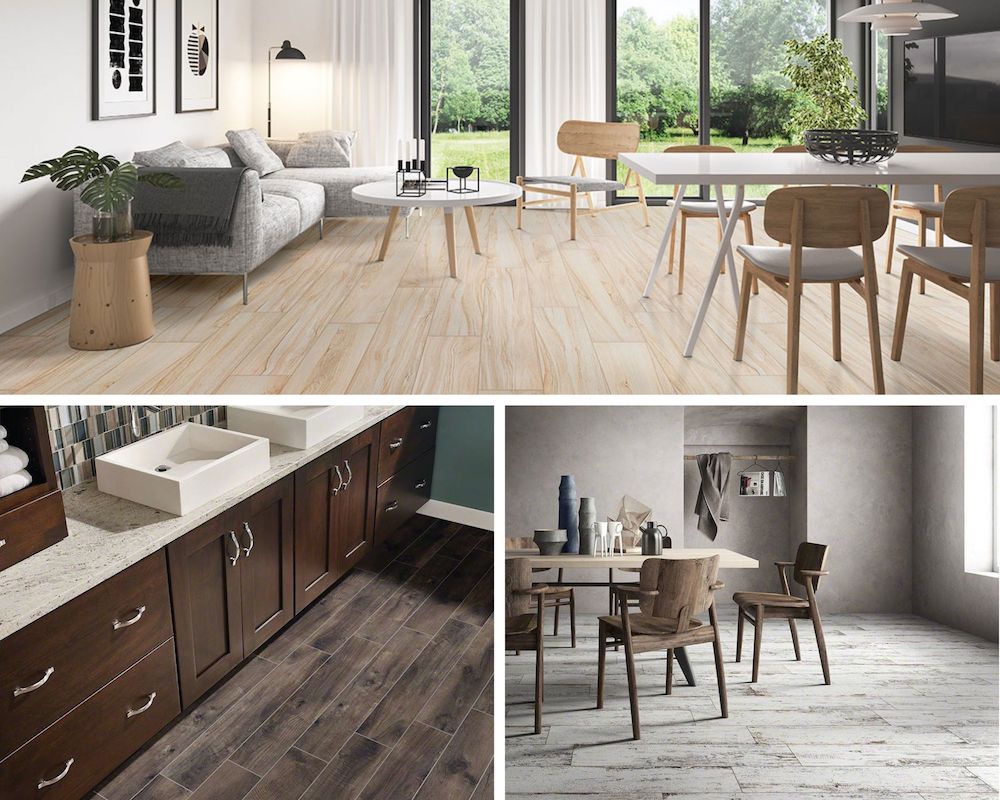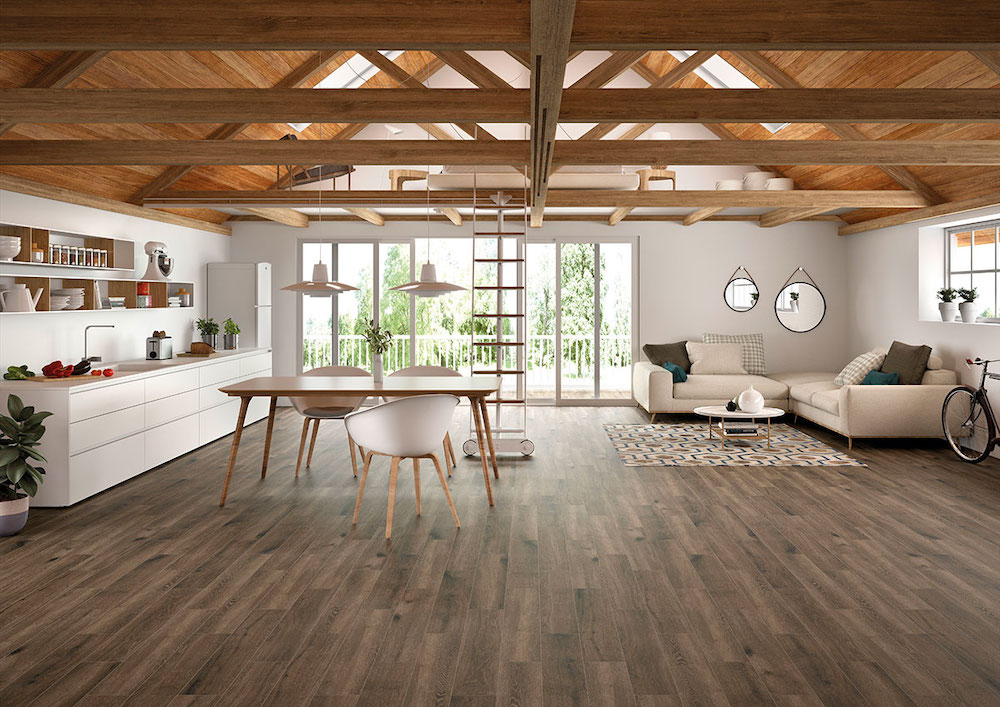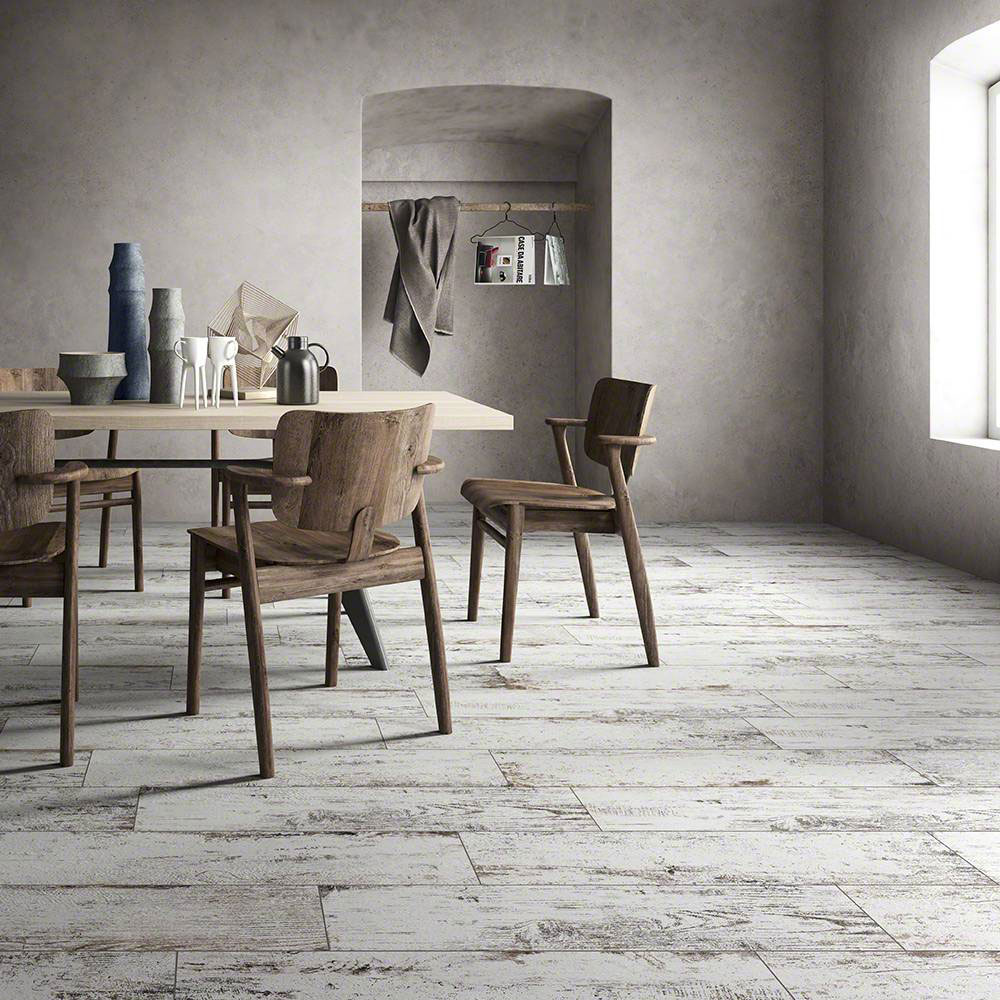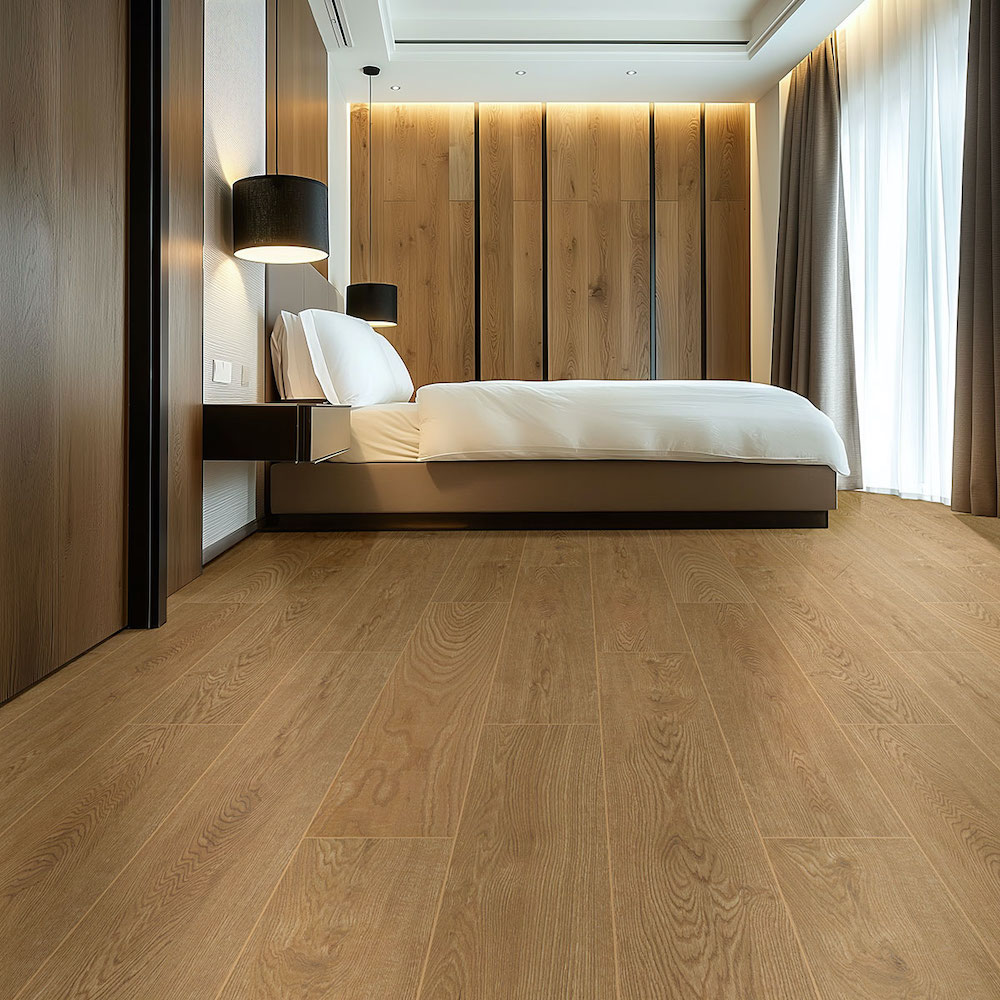Durability Showdown: Porcelain Wood Tile Vs. Real Wood Flooring
September 11, 2024
Porcelain Wood Tile looks just like real hardwood. Its natural colors and realistic grain and knots are impressive. However, maintaining porcelain wood look tile is easy! A quick vacuum or mop now and then keeps it looking fantastic for years.
Wood tile is also more affordable. It costs between $4-12 per square foot, while real wood flooring can exceed $15 per square foot. If you prefer a natural and uniform appearance without random knots and rings, wood tile is the way to go!
But wait, there’s more! Here are five additional reasons to consider porcelain over real wood.
Wood Tile is Tough
Natural hardwood floors are beautiful but need a lot of care. Keep your pets' nails trimmed to avoid scratches on the wood. It's important to maintain indoor humidity between 35-55% to prevent warping or drying. Be sure to wipe up spills right away to avoid discoloration or soaking into the boards. In contrast, porcelain wood tile, like Vintage Lace, is super tough! It can handle water, temperature changes, and varying humidity levels with ease. Plus, porcelain wood tile doesn't dent or split like wood does. This means your wood tile will likely need little to no repairs throughout its lifetime!
Tile Laughs at Water
 Antoni Nero Porcelain Wood Tile
Antoni Nero Porcelain Wood Tile
Porcelain wood tile is an excellent choice for bathrooms and kitchens! Unlike hardwood floors, it is waterproof. Take Antoni Nero, for instance. It has the charming look of vintage, random-width hardwood flooring. Plus, it won't buckle from those little drips in the shower or spills in the kitchen. What a great option for your home!
Tile Loves Kids and Pets
 Aspenwood Arctic Porcelain Wood Tile
Aspenwood Arctic Porcelain Wood Tile
Hardwood floors can wear out over time. But porcelain wood tile keeps its color and texture for years! This makes it perfect for busy areas like entryways and family rooms where kids and pets play. Aspenwood Arctic features beautiful, rich creams with natural-looking veins, grains, and knots. Best of all, they won’t fade or scratch. Cleaning up after little accidents is a breeze!
Tile is Sustainable and Lasting
Wood tile floors are a great “green” alternative to real hardwood. No trees are cut down to create them! They come in beautiful styles, like the rustic-looking Cabana Tawney. Plus, they resist fading and warping. Unlike hardwood, you won’t need to refinish them every 5-10 years. Your taste may change before your wood look tile floors wear out!
Tile Looks Natural
 Country River Moss Porcelain Wood Tile
Country River Moss Porcelain Wood Tile
Wood tile looks amazing with its wide range of natural tones! Country River Moss is a standout, showcasing rich browns and beiges that beautifully mimic the knots and grains of real hardwood. It works wonderfully on countertops and accent walls too. Unless you get down on your knees to feel it, you won’t even notice it’s tile instead of wood in your kitchen or mudroom. And the best part? It's super easy to maintain!
For more information on how porcelain wood tile can transform your home, chat with our experts online or visit an MSI showroom to explore your options.
READ MORE ABOUT THE DIFFERENT TYPES OF PORCELAIN TILE
Porcelain Tile Is Taking Over the Design World
Porcelain Tile Isn’t Going Anywhere
Porcelain Tile, Look Of Vein-Cut Travertine
Porcelain Vein Cut Looks

 Cabana Tawney 9x47
Cabana Tawney 9x47